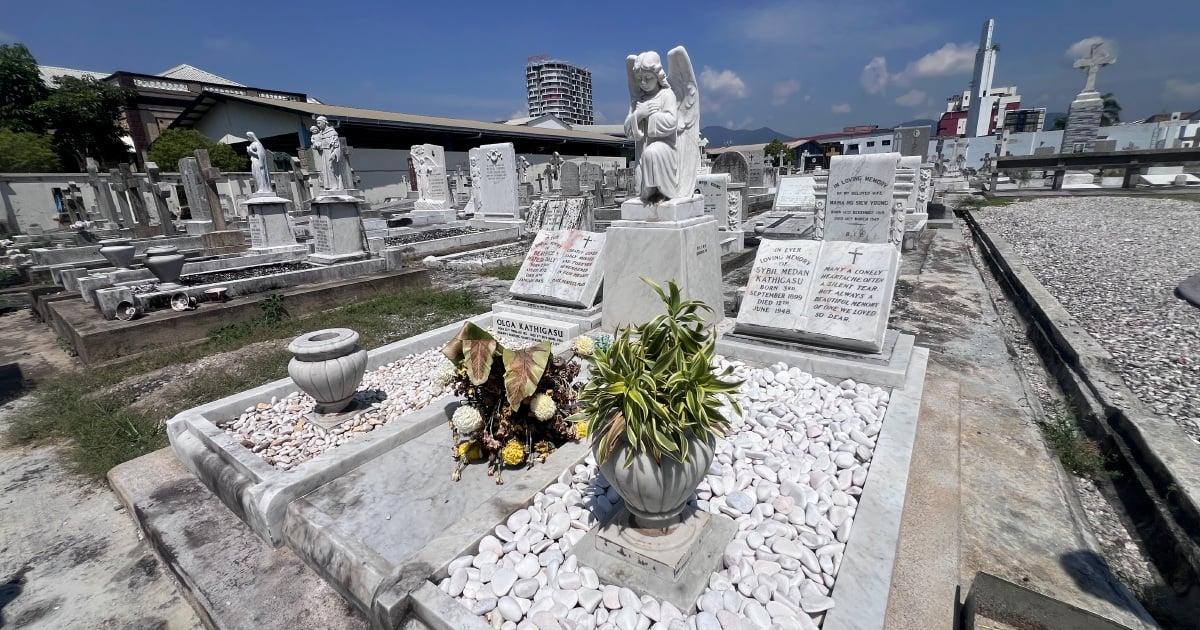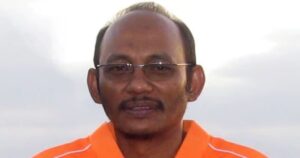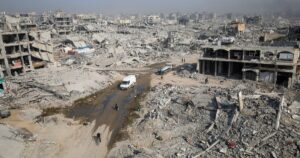THE lit lamp placed in the top left window of the lone double-storey shophouse at 74 Main Street, Papan, southwest of Ipoh, Perak, was the signal that all was well. That, and “Semua ada baik” — shortened to just S.A.B. in clandestine notes — was all the assurance the wounded and weary guerrillas needed.
From the cloak of jungle and darkness, they would emerge, silent shadows making their way to the back door, where three knocks meant help was at hand to ease their pain, injury and illness.
“It’s the guerrillas, Mrs K. Some of them are sick and wounded and need medicine. They know you don’t like the Japs. Will you help?”
Sybil Medan Kathigasu did not hesitate.
That moment marked the beginning of Sybil’s secret role, alongside her husband, Dr Abdon Clement Kathigasu, in caring for wounded rebels under Japanese rule. Trained as both a midwife and nurse, Sybil’s fluency in Cantonese proved invaluable in the medical practice she ran with her husband.
Malaya, now Malaysia, had lived through several periods of foreign rule. For more than a century, much of the peninsula was under British control, its economy driven by tin and rubber while towns like Ipoh and Papan grew around the booming mining industry. But in December 1941, the tides of war shifted dramatically when Japanese forces invaded Malaya. Life changed overnight.
By early 1942, the Union Jack had fallen and the occupation began — three years and eight months marked by fear, scarcity and brutality. In towns like Papan, curfews were imposed, food rationed and dissent crushed without mercy.
Resistance groups formed in the jungles, waging guerrilla warfare against the occupiers, but their struggle came at a heavy cost. Civilians who offered shelter, medicine or aid to these fighters risked arrest, torture and death.
As life in Papan grew harder, many who sought Sybil’s help were destitute, and she often treated them free of charge. By day, they helped the sick and needy in Papan. By night, it was the soldiers of the Malayan People’s Anti-Japanese Army (MPAJA) who needed their help.
With Malaya cut off and radios banned, Sybil secretly kept a shortwave set — later two more, all nicknamed “Josephine” — to tune in to BBC news. Each night, the radio was used before being dismantled, and hidden beneath the floorboards. Despite the danger, her faith and belief that the British would return emboldened her — until the radios ultimately led to her arrest.
In 1943, Sybil and her husband were finally arrested. For two long years, they endured brutal interrogation and torture at the hands of the Kempeitai, Japan’s feared military police. In February 1945, they were sent to Batu Gajah jail, where her husband was sentenced to 15 years’ imprisonment and Sybil herself received a life sentence.
The war ended in August 1945 and the couple was finally freed from incarceration. While in London for treatment of her grievous injuries, Sybil’s courage was honoured with the George Medal for gallantry, making her the first Malayan woman to receive the award. Yet she never recovered. The fractured jaw inflicted by the Kempeitai became infected, and the resulting septicaemia claimed her life in June 12, 1948, at just 49 years old.
As we stand under the blistering heat at Sybil’s gravesite in St. Michael’s Church cemetery, Ipoh, cultural activist and heritage conservationist Law Siak Hong says: “Few understood the risks she took. She was a woman far ahead of her time.”
HER STORY
“Sybil defied every expectation of women in the 1940s,” shares Law. At a time when women were largely confined to the roles of homemakers and caregivers, she chose to stand at the heart of resistance, risking her life — and even her family’s safety — to aid wounded guerrillas fighting the Japanese occupation.
“Women then were expected to endure hardship quietly, to keep the family together, not to put themselves in danger,” he explains. “But Sybil broke that mould. She chose action over silence, knowing full well the price she might pay.”
Despite the enormity of her sacrifice, Sybil’s story has never truly received the recognition it deserves. There were news stories, of course, and in 2010, Astro aired the 10-part miniseries Apa Dosaku? (What is my sin?) with her grandniece Elaine Daly portraying her, briefly bringing her story to a wider audience.
But beyond these moments, Sybil has not been widely celebrated as someone who contributed to the nation’s history. Her bravery lived quietly in the margins, remembered mostly by historians and those who knew of her role during the Japanese occupation.
Only more recently has her legacy begun to resurface, sparked by the Catholic Church’s move to begin the process of her canonisation. Still, for many Malaysians, Sybil’s extraordinary courage and suffering remain unfamiliar — a missing chapter in the nation’s collective memory.
“People didn’t believe her at first,” the 74-year-old recounts. He goes on to explain that when No Dram of Mercy was published, many doubted her account — until Ho Thean Fook, a young Chinese schoolteacher and the go-between for Sybil and the guerrillas, wrote Tainted Glory, which corroborated much of what she described.
The idea that a woman could endure brutal torture, outwit the Kempeitai and play a pivotal role in aiding guerrillas simply defied the gender norms of the time — and for many, it seemed implausible. Political sensitivities also compounded the doubt: Sybil’s association with the communist-led MPAJA made her story more contentious, further fuelling scepticism about her account.
“Sybil wasn’t a communist, nor did she share their ideals,” insists Law. “She simply couldn’t sit back and do nothing. She wanted to play a part — to stand on the side of those resisting oppression. For her, it was never about politics. It was about duty, courage and humanity.”
For Elisa Shafiqah Shahrilnizam, the Asian representative to the International Steering Group of the United Network of Young Peacebuilders — a global network of over 100 youth-led organisations working towards a world free from violence — the omission of women’s contributions from World War 2 narratives is deeply disappointing.
“Historical accounts often overlook or downplay the role of women, especially those on the frontlines,” she laments, admitting: “I’d never even heard of Sybil Kathigasu before this — and that makes me really upset.”
To Elisa, Sybil’s absence reflects a larger issue: Malaysia’s reluctance to confront its historical traumas, from the Japanese occupation during World War 2 to the May 13 riots.
School textbooks, she says, are often shaped by dominant narratives and political priorities, leaving little room for diverse voices and local heroes — and Sybil is one of them. “There should be more informal spaces where individuals and students can safely interrogate and discuss controversial aspects of history,” she says.
“The nation needs a lot of healing and stronger community structures to move forward,” Elisa adds. “Conflicts are too often seen only through a military lens, while the sacrifices of ordinary people who bore the brunt of war are overlooked.”
By today’s terms, Sybil would be seen as a frontliner, Elisa says — someone who risked everything to serve her community in its darkest hour. She wasn’t on the battlefield, but she was in the thick of it: treating the wounded, aiding the resistance and shielding those around her from harm.
In many ways, her actions embodied the principles now championed under the Women, Peace and Security (WPS) agenda, a global United Nations framework that calls for women to be recognised not just as victims of war but as active agents of change.
Long before the framework existed, Sybil lived its ideals: participating in community resistance, protecting civilians, and, through her detailed affidavit and testimony about her torture, helping bring Kempeitai perpetrators to justice — an act of recovery for a nation grappling with wartime trauma.
Across the countries that make up the Association of Southeast Asian Nations (Asean), there’s a growing push to localise WPS frameworks to strengthen women’s roles in peacebuilding and resilience. Yet Malaysia, despite chairing Asean this year and hosting the 2nd Asean WPS Summit in Kuala Lumpur this September, has been slow to integrate these perspectives into its policies and narratives.
Elisa notes that “Sybil’s absence — and that of countless women like her — from our collective memory underscores this gap, revealing how their courage and sacrifices remain sidelined in official histories and security frameworks.
KEEPING THE FAITH
But there are glimmers of hope that Sybil’s story will finally reach a wider audience. Last year, the Diocese of Penang officially opened the cause for her beatification and canonisation within the Catholic Church, recognising her extraordinary courage and sacrifice.
The road to sainthood, however, is exacting. A candidate’s life is pored over, every detail documented and verified before the “cause” reaches the Vatican. Miracles — extraordinary events believed to occur through the person’s intercession with God — are crucial, and each is subjected to intense medical, scientific and theological scrutiny. One confirmed miracle can earn the title “Blessed”; a second, with the Pope‘s approval, leads to canonisation as a saint.
If successful, Sybil would become Malaysia’s first saint — a milestone that could bring her story to the forefront and inspire renewed interest in her remarkable life.
“We know from No Dram of Mercy that Sybil’s courage was rooted in faith,” says Cardinal Sebastian Francis, Bishop of Penang. “But beyond faith, her actions reflect her values — as a woman, a medical professional and a partner. Her willingness to serve, ease suffering and save lives lies at the heart of her legacy.”
The cardinal and his team are still collating, interpreting, and presenting evidence, and he describes the process as highly stringent. Rome’s standards are rigorous, requiring verification of Sybil’s heroic virtues and any miracles attributed to her intercession. “We are proposing Sybil as someone worthy of imitation,” he explains, “based on her life choices, the decisions she made and how she engaged with the people around her.”
In recent years, interest in Sybil’s life and legacy has been steadily growing. The translation of her book, No Dram of Mercy into Bahasa Malaysia, Tamil, Mandarin, Japanese and French reflects not only a renewed national interest but also a widening global recognition of her story, says the cardinal. “Her gravesite and even what used to be her clinic in Papan, have become places where visitors come to pay their respects.”
Dr Elsa Lafaye de Micheaux, a political economist and professor at the National Institute of Oriental Languages and Civilisations in Paris, first set out to translate No Dram of Mercy into French.
For her, the project was a way to help French readers understand another part of the world — Malaya during the Japanese occupation. “Things happened here that can be compared, understood and directly felt by a French audience,” she explains.
But as Elsa began preparing for the French edition, she discovered there was no translation in Bahasa Malaysia. “It struck me as surprising,” she says, “that such an important story wasn’t yet accessible in the national language. Before Sybil’s story could travel abroad, it first had to be reclaimed at home. That was even more urgent and important.”
That led to the launch of Kenangan Luka, the Bahasa Malaysia edition, marking the first step in bringing Sybil’s story to a broader audience both locally and globally.
Elsa notes that Sybil’s life offers lessons that extend far beyond the context of war. To her, Sybil’s story holds an enduring power — one that transcends time and circumstance, with the potential to inspire daily life even today.
She continues: “Through her unique, sober and direct way of recounting her experiences, Sybil leaves us with a method of resistance — the courage to simply say, ‘No, don’t,’ or ‘No, I don’t want to,’ or ‘No, I will not do this,’ even in the face of petty injustice or minor abuse of power.”
ENDURING LEGACY
The town of Papan feels like a ghostly remnant of a time that has stood still. Pre-war shophouses line the old village street, their faded facades whispering stories of a forgotten past.
Here, Sybil’s former clinic still stands — a crumbling monument to her courage and sacrifice. A modest signboard nearby speaks of her life and legacy, but the silence of the town suggests how easily her story could fade into obscurity.
Law ran the memorial as long as he could, but when the funds dried up, the doors closed for good. Now, only pages of news reports about Sybil’s life remain plastered on the walls. “It’s all I can do now,” he says resignedly.
Cardinal Francis hopes that one day the memorial and building itself can be restored as a public space. “We need to preserve this for future generations,” he says. “Her memory must not remain silent. It should live on in our schools, our churches, our homes and within the nation’s awareness”
Continuing, he points out: “Sybil’s story carries the seeds of solidarity — between faiths, cultures and histories. Her life, in all its complexity, is a heritage we must honour and keep alive.”
It’s especially poignant to pass by the prison in Batu Gajah where Sybil was incarcerated, and then St Joseph’s Church, whose bells had comforted her during her darkest hours.
Upon her release, partially paralysed from her injuries, she asked to be taken to the church. Carried to the entrance, she crawled on all fours to the altar as an act of thanksgiving.
“For my family and I, Sybil’s story is not just history — it is legacy. It reminds us that courage can exist in the most ordinary of people, and that love for one’s community and country can transcend fear. Her sacrifice is a compass for us, a reminder to stand for what is right, even when it comes at personal cost,” says Sybil’s grandniece Elaine.
Though No Dram of Mercy tells Sybil’s story, it was actually ghostwritten to give her account structure and polish Law, who has in his possession the original manuscript, believes her unfiltered voice carries a different weight. He hopes to publish it one day, so readers can experience Sybil’s story as she intended to tell it — in her own words.
“It’s not going to be an easy read,” he admits. “Sybil wasn’t a writer. Her sentences were simple, her chapters straightforward — each one something she remembered. But it would be her voice.”
As we light candles on her grave, I’m reminded of the small light in the upper-left window of her clinic — a signal to injured soldiers that they could come to her door for help. “Semua Ada Baik” — all is well — was the title Sybil gave her original manuscript. It was her quiet promise to those she risked everything to help.
Eighty years on, the promise feels unfulfilled — not because her courage has dimmed, but because we have allowed her light to fade. Her clinic stands abandoned, the memorial shuttered and her story barely grazes our history books.
As Merdeka Day approaches and Malaysia prepares to host the 2nd Asean WPS Summit this September, Sybil’s legacy calls for more than quiet remembrance. It challenges us to confront the silences in our narratives, to honour the unseen contributions of women in times of conflict and to ensure their sacrifices shape the policies of peace and security today.
Sybil defied an empire to keep hope alive. The least we can do is keep her memory burning — not as a relic of war, but as a reminder of what courage looks like and what it costs.
© New Straits Times Press (M) Bhd






